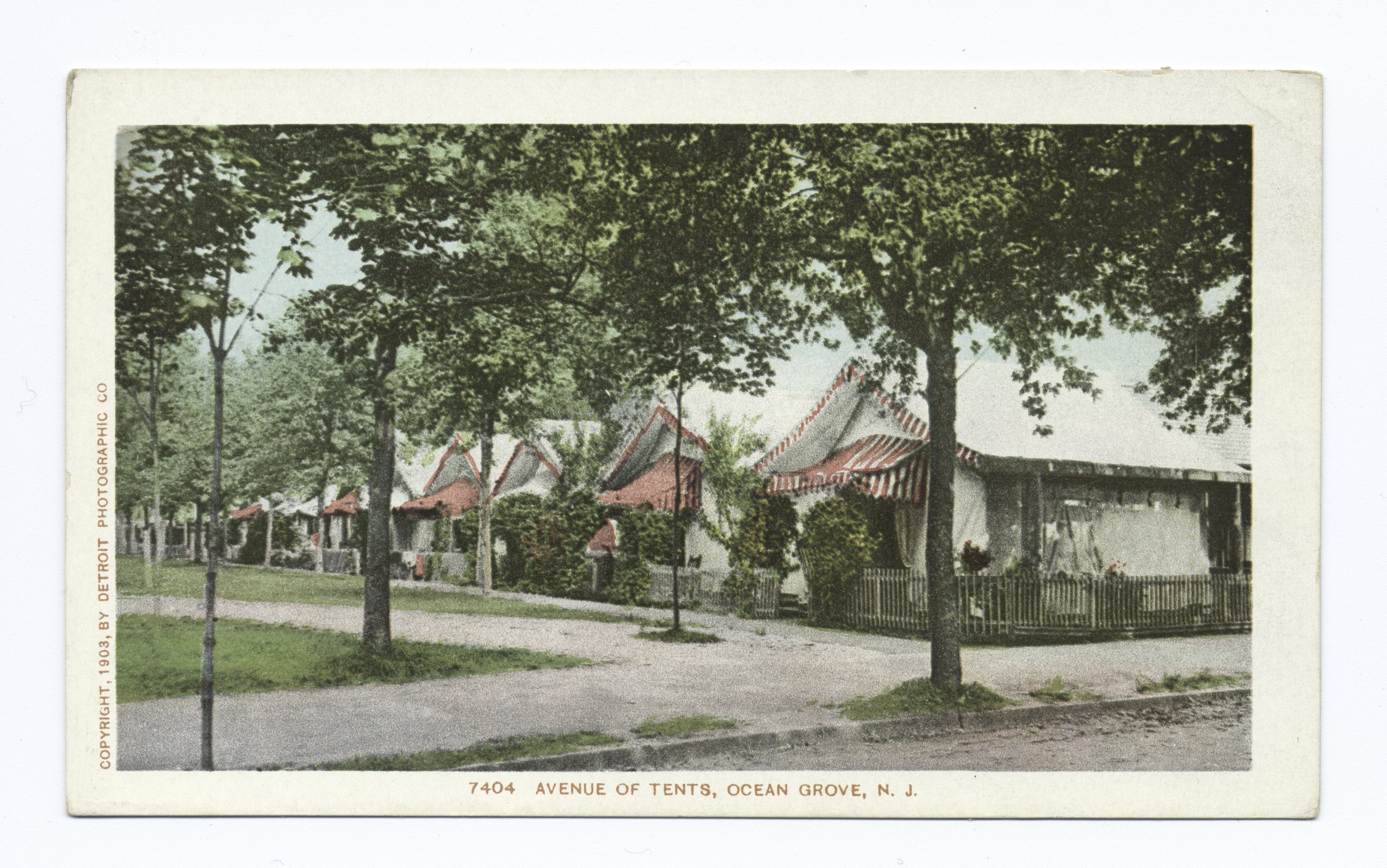
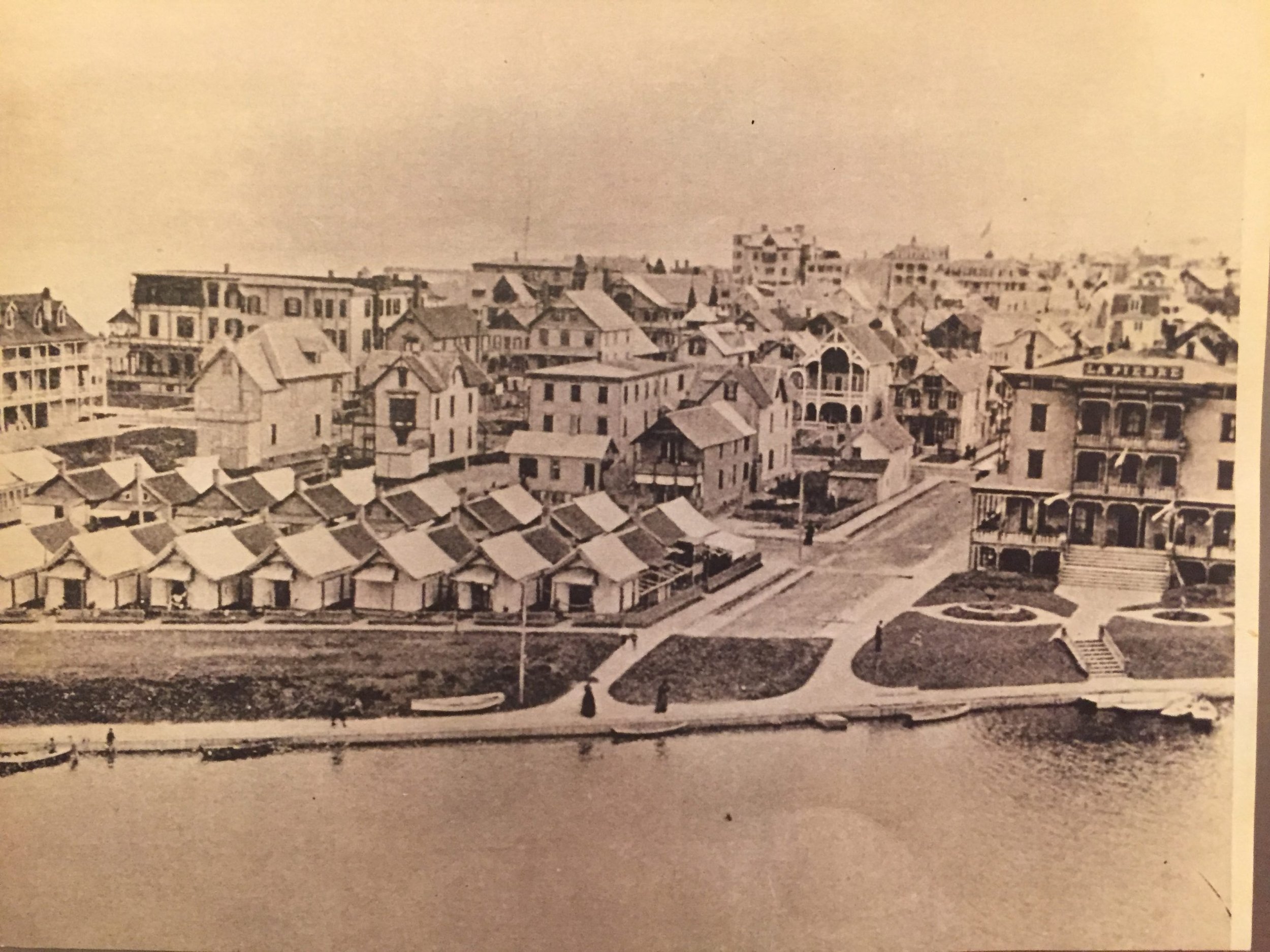
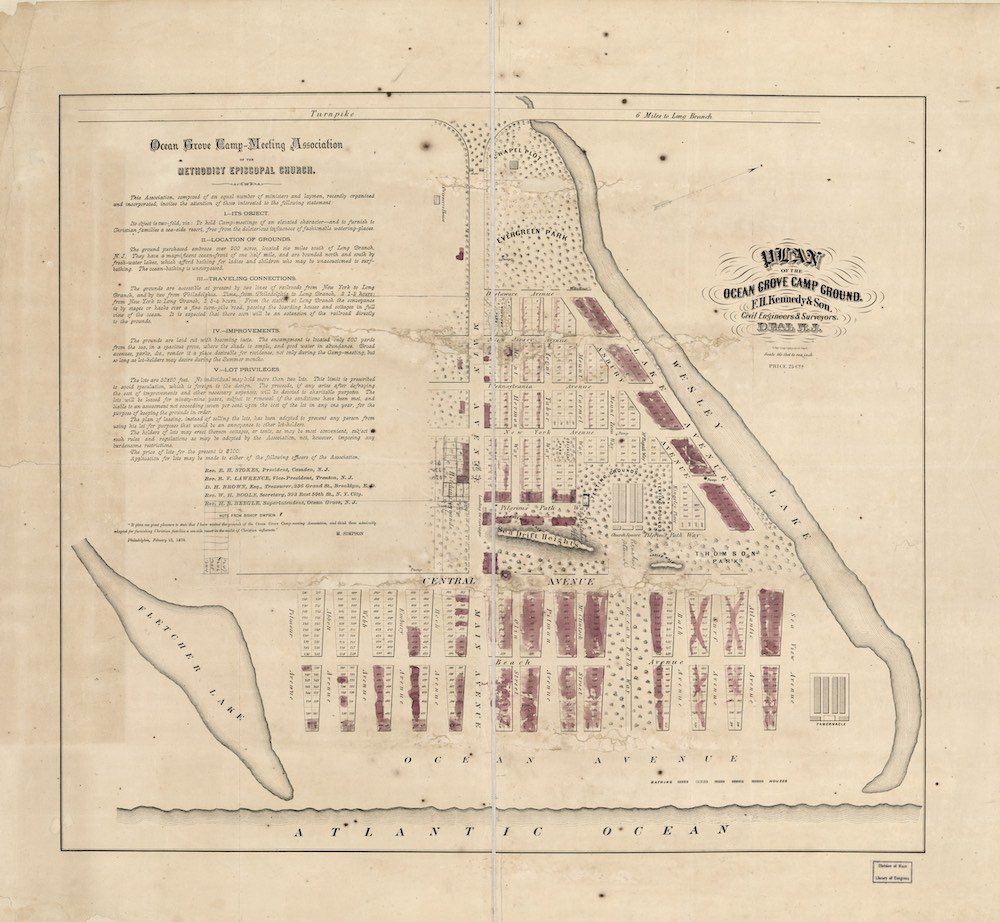
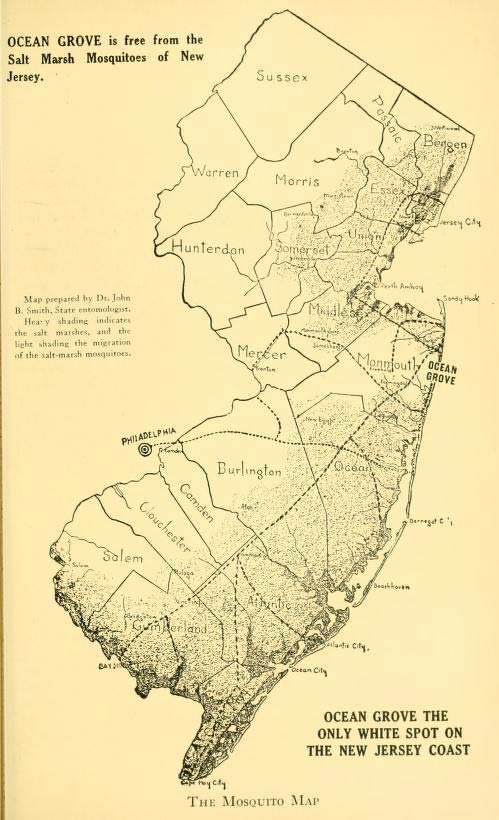
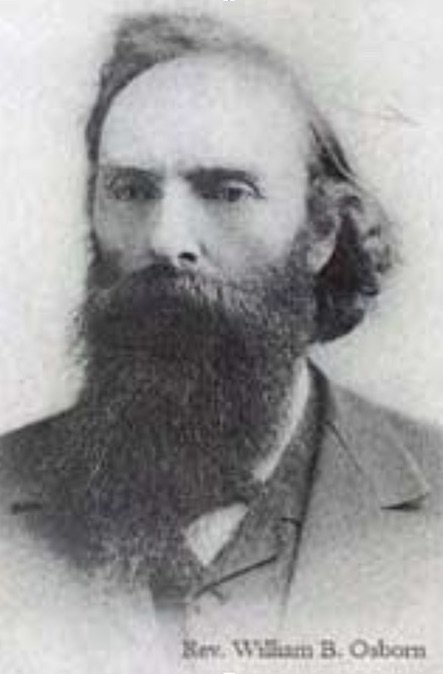

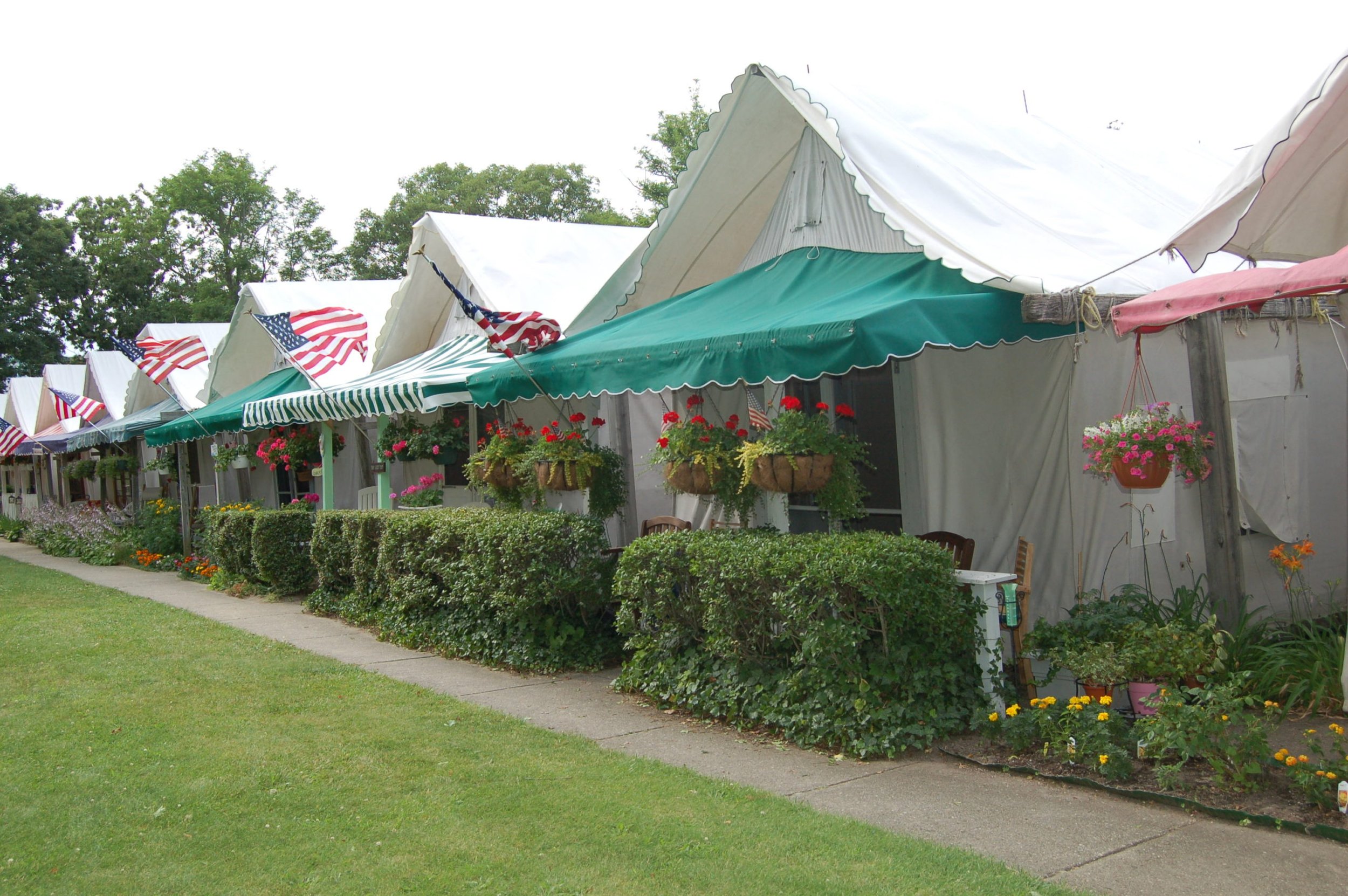
Learn about Ocean Grove
Bob Waitt and Ted Bell: Preserving the History of Ocean Grove
Bob Waitt and Ted Bell have been indispensable contributors to the preservation of Ocean Grove's rich history. Their dedicated research and numerous contributions have provided invaluable insights into the development of this historic seaside town.
Ted Bell's passion for Ocean Grove was unparalleled, and his meticulous research unearthed forgotten tales and essential narratives of the town's past. His thoughtful guidance and unwavering commitment to the Historical Society of Ocean Grove were instrumental in safeguarding the town's heritage. While Ted may have passed, his enduring legacy is warmly remembered throughout the organization.
Bob Waitt, a steadfast advocate for Ocean Grove's history, continues to illuminate the town's past through captivating tours during the summer months. His wealth of knowledge and enthusiastic storytelling bring Ocean Grove's history to life, captivating locals and visitors alike.
Their combined efforts have not only deepened our appreciation for Ocean Grove's history but have also ensured that future generations will continue to cherish and understand the town's remarkable heritage.
HSOG Television features:
Drive by History: The Surprising Legacy of Ocean Grove (PBS 2025)
In with the Old (Magnolia Network 2024)
This Old House (Thirteen 2013)
-
The State and National Historic District of Ocean Grove, located on the North Jersey Shore in Neptune Township, Monmouth County, New Jersey, is a living example of one of few remaining religious camp meeting sites from the Holiness Movement after the Civil War. In 1869, when a small group of Methodist ministers and laymen came to the area seeking a place to establish a religious community, there were only four residents living between Long Pond and Goose Pond, now Wesley Lake and Fletcher Lake respectively. The Rev. William B. Osborn of Farmingdale, New Jersey, inspired by a camp meeting he had attended some years earlier, scoured the Jersey Coast for the perfect place to establish one, and traveling alone came upon what is now known as Ocean Grove.
-
Camp meetings and religious revivals trace their lineage to the Great Religious Revival Period (1781-1805) that began in the southern frontiers of Georgia and the Carolinas. One religious camp meeting in 1801 involved some 3,000 to 5,000 people traveling to a farmer’s field and woods near Cane Ridge, Kentucky. The 4-5 day outdoor revival featured ministers preaching from rustic planked platforms and fresh cut tree stumps, leading their flocks both night and day with sermons on sin and atonement. Emotionally exhausted worshipers would retire to their covered wagons and tents for rest, only to reassemble again when the camp bell rang the call to worship and, hopefully, salvation. Over the next two centuries, attendance at camp meetings and revivals would ebb, flow, and evolve, depending on economics, social conditions, and leadership.
-
The end of the American Civil War in 1865 brought rapid social change, due in part to the new technologies which provided more efficient methods to produce war materials. Farmers left the farms and rural churches to move to the cities where work and better wages offered new opportunities. Railroads and steamship lines provided fast and easy transport for middle class families eager to escape the crowded cities for a summer vacation at fashionable water resorts such as Saratoga and Coney Island, New York; and Long Branch and Atlantic City, New Jersey. This new mobility coincided with a new era of religious awakening and the emergence of revivals within various Protestant denominations.
-
In 1867, Reverend William B. Osborn, a Methodist preacher, attended a week long outdoor holiness camp meeting in Vineland, New Jersey. Osborn’s enthusiasm knew no bounds and, eventually, he found an ideal camp meeting site, a secluded community on the North Jersey Coast, where spiritual and physical health could be renewed. Thus, on July 31, 1869, a group of ministers and friends camped at Thompson Park (now called Founders Park) and, after a candlelight prayer service, dedicated themselves to establish a permanent Christian camp meeting community called “Ocean Grove.” From this simple beginning there would emerge a permanent town by the sea with police and fire departments, postal and telegraph services, water, sewerage, and electricity all servicing the needs of a growing Christian resort.
-
A petition was presented to the New Jersey Legislature to incorporate the Ocean Grove Camp Meeting Association. On March 3, 1870, a state charter was issued to the newly formed Association granting the 26 Trustees (13 ministers and 13 lay persons) the authority to purchase and hold real and personal estate, to construct and provide all necessary works to supply said premises with water and artificial light and other improvements deemed necessary or desirable. The charter also gave the Trustees the power to appoint peace officers as deemed necessary for the purpose of keeping order on the camp-grounds and premises of the corporation.
-
Streets, and eventually 1,971 lots, were laid out, with the first lot being purchased by James A. Bradley for $86. Another 372 lots, 30’ by 60’ in size, were quickly sold by the end of 1870. Bradley, a New York businessman, would later purchase and develop the land to the north as the city of Asbury Park.
A new town-planning design utilized the “set-back” concept. Beginning two blocks from the ocean, each structure approaching the beach was successively set back from its adjoining neighbor, thus assuring a view of the ocean from each home.
-
The Camp Meeting Association established various rules and regulations, including perhaps the most famous: a ban on all carriages and automobiles on the streets on Sunday, a ban on Sunday beach bathing, and a prohibition of the sale of liquor within a mile around Ocean Grove.
President of the United States, Ulysses S. Grant, in 1875, arriving by carriage on Sunday at the chained gates of Ocean Grove, simply tethered his horses and carriage at the gate and walked the half mile on sand streets to his sister’s house on Wesley Lake, then to the open air auditorium where 5,000 children, adults, and Civil War veterans welcomed him in voices of praise. Several more presidents have visited Ocean Grove in subsequent decades.
-
In 1975 and 1976, Ocean Grove received designations as State and National Historic Districts. Designations were based on the Historic District’s significance as an important and intact example of a 19th century planned community (i.e. town layout, flared building setbacks); and its unique aggregation of historic architecture, including residences, businesses, and religious structures in late 19th and early 20th century seaside vernacular architecture styles. The District contains the largest collection of Victorian and early 20th century structures in America. Neptune Township established a Board of Architectural Review and created exterior design standards that would ensure that the District would maintain its architectural heritage. To correspond with state and national historic preservation standards, Neptune Township later replaced the Board with the current Historic Preservation Commission and new Design Guidelines for Residential and Commercial Structures.
-
Tent City. At one time, 660 tents were leased or owned on individual lots throughout Ocean Grove. Now 114 tents remain, surrounding the Great Auditorium. Each spring, by May 15, the canvas tents are brought out from their backroom sheds to be erected over front wooden platforms transforming them into living rooms, to be furnished with couches, beds, chairs, rugs, lamps, and pictures. Meanwhile, outside along the walks, flowers are planted by the tenters, many of whom are proud to be fourth and fifth generation summer Ocean Grovers.
Similarly, throughout the Historic District, pre-season events begin as residents and businesses rush to complete last minute touch-ups to their homes, shops, restaurants, and hotels, in preparation for the arrival of family, friends, and visitors. The summer camp meeting then continues as it has over 150 years until the fall, when the tent canvases are taken down and stored until next season.
-
This is Ocean Grove, now a year-round community where neighbors care about and help each other, a place where one can find rest, recreation, and personal renewal.
